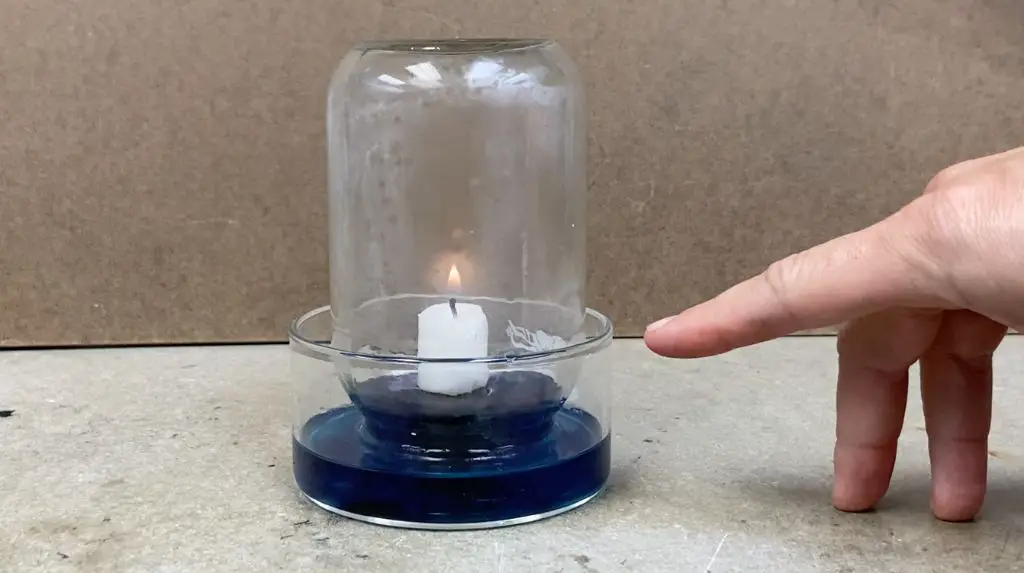What Does Candle Wax Evaporate Into?
Candles are a popular household item that provide light and aroma. They work by using a wick to draw liquid wax up to the flame, where it evaporates into the air. When a candle burns, the wax seems to disappear. This leads many people to wonder, what does candle wax evaporate into? In this article, we will examine the chemical composition of candle wax and the evaporation process to understand the end products formed when candles burn.
Composition of Candle Wax
Candle wax is made up of a variety of ingredients that provide the desired burning properties. The main ingredients used in modern candle making are:
Paraffin wax – A petroleum-based wax made from purified crude oil. It is odorless, colorless, and highly flammable. Paraffin wax makes up the majority of mass-produced candles.
Beeswax – A natural wax produced by honey bees. It has a sweet, honey-like scent and is often blended with other waxes. Beeswax burns brighter and slower than paraffin.
Soy wax – A natural wax made from hydrogenated soybean oil. It burns clean and is biodegradable. Soy wax is commonly used for homemade and eco-friendly candles.
Evaporation Process
At the molecular level, evaporation occurs when molecules near the surface of a liquid gain enough energy to overcome intermolecular attractive forces and escape into the vapor phase. The attractive forces between liquid molecules arise from various intermolecular interactions such as hydrogen bonding, dipole-dipole interactions, and London dispersion forces. During evaporation, only molecules near the surface can escape easily since they experience the full force of attraction from only the liquid molecules beneath them. Molecules in the interior surrounded in all directions have a much lower chance of gaining enough energy to escape (Nagata, 2015).
A wick provides an efficient evaporation surface by using capillary action to transport liquid from the reservoir to the evaporation surface. As liquid molecules evaporate from the wick, more liquid flows up to replace them. This continual replenishment ensures there are always liquid molecules at the surface capable of gaining enough energy to evaporate. The relatively small diameter pores in a typical wick also provide a high surface area to volume ratio for evaporation. By keeping the wick exposed to air circulation, the vapor concentration gradient remains high promoting evaporation (Nagata, 2015).
Candle Wax Evaporation
When a candle burns, the heat from the flame melts the solid wax near the wick into a liquid state. This liquid wax is then drawn up the wick through capillary action. At the tip of the wick, the intense heat of the flame vaporizes the liquid wax into a hot gas or vapor state.
According to Highland Candle Company, “As the wax vaporizes, the vapors combine with oxygen in the air to produce the flame. The wax doesn’t disappear or turn into nothing. Instead, the hydrocarbon molecules break down and reform into different chemicals.” [1]
The key takeaway is that the solid candle wax melts into a liquid, which is then vaporized by the flame’s heat into a gaseous state. The wax molecules break down and reform into different chemicals through this evaporation process. So candle wax does not disappear, but rather undergoes a physical transformation from solid to liquid to gas.
Evaporation Products
When a candle burns, the majority of the wax evaporates into two main components: carbon dioxide and water vapor. As the candle wax melts and vaporizes from the heat of the flame, the hydrocarbons in the wax break down into these simpler molecules. According to this New York Times article, over 80% of candle wax turns into carbon dioxide gas, while around 16% evaporates as water vapor.
While carbon dioxide and water vapor make up most of the evaporation products, trace amounts of other chemicals are also released. These can include small quantities of formaldehyde, acetone, and other volatile organic compounds produced from incomplete combustion. However, the amounts are very low – typically less than a fraction of 1% of the total emissions. The high proportions of carbon dioxide and water vapor, both non-toxic, mean candle emissions are generally safe.
Carbon Dioxide
Carbon dioxide (CO2) is one of the main gaseous products of candle wax evaporation. It is a colorless, odorless gas composed of a carbon atom bonded to two oxygen atoms through double covalent bonds (O=C=O). At standard temperature and pressure, carbon dioxide is a gas, however it can exist as a solid, liquid, or gas depending on the temperature and pressure conditions. Some key properties of carbon dioxide include:
Carbon dioxide is a greenhouse gas that contributes to global warming. It absorbs infrared radiation and traps heat in the atmosphere, leading to rising average global temperatures over time. While carbon dioxide occurs naturally through respiration and decomposition, burning fuels like candles emits additional CO2 that builds up beyond natural levels. According to the Carbon Dioxide Properties website, carbon dioxide emissions have increased by over 30% since pre-industrial times due to human activities like energy production.
During candle wax evaporation, the hydrocarbon molecules in the wax break down and react with oxygen in the air. This oxidization reaction produces carbon dioxide and water vapor as waste products that are released into the surrounding environment. So when candle wax evaporates, the carbon atoms in the wax combine with oxygen to form carbon dioxide gas.
Water Vapor
As candle wax evaporates, it releases water vapor into the air. Water vapor is gaseous water in its invisible form. It is one of the most abundant gases in the Earth’s atmosphere and plays an important role in the planet’s climate and weather patterns. Some key properties and facts about water vapor include:
Water vapor is lighter than dry air. At the same temperature and pressure, 1 kg of water vapor has a volume of 1.674 m3 compared to 0.716 m3 for dry air (Panin). This means water vapor is less dense than dry air.
Water vapor can absorb, emit and reflect thermal radiation. This makes it an effective greenhouse gas that helps regulate the Earth’s temperature (Panin). Without atmospheric water vapor, the Earth’s average surface temperature would be below freezing.

The amount of water vapor the air can contain depends on the air temperature. Warmer air can hold more water vapor than colder air before condensing into liquid water or ice (Webpages). This is why humidity tends to be higher in the summer.
Water vapor plays a crucial role in the hydrologic cycle and evaporation. Heat from the sun causes liquid water on Earth’s surface to evaporate and enter the atmosphere as water vapor. This invisible vapor can travel vast distances before condensing into clouds and falling back to the surface as precipitation.
Candle wax releases additional water vapor into the air through evaporation. While not a significant source compared to evaporation from oceans and lakes, this extra water vapor can contribute to local humidity levels in areas where candles are burned frequently.
Other Chemicals
While carbon dioxide and water vapor make up the majority of candle emissions, trace amounts of other chemicals are also released when candles burn. These include formaldehyde, benzene, and toluene. According to research, the levels of these chemicals detected from candle emissions are very low, even from prolonged burning. One study found that burning candles for 4 hours in a small, unventilated space produced formaldehyde levels similar to amounts naturally present in the air (https://www.ncbi.nlm.nih.gov/pmc/articles/PMC9832800/).
Benzene and toluene exposure at very high levels can have toxic effects, but research shows candle emissions result in extremely low exposure levels. In fact, one analysis found a person would have to be in an unventilated room with more than 200 burning candles before benzene exposure would reach concerning levels (https://www.nytimes.com/2021/11/09/well/scented-candles-health.html). While formaldehyde, benzene and toluene are present in trace amounts, the low exposure from candles is not considered a significant health risk.
Safety Considerations
When burning candles, proper safety precautions should always be taken to prevent fires and other hazards. According to the National Fire Protection Association (NFPA), candles cause an estimated 8,000 home fires each year in the U.S. (https://www.nfpa.org/education-and-research/home-fire-safety/candles).
To burn candles safely:
- Make sure to keep candles away from flammable items like curtains, books, paper, etc. Candles should be kept at least 12 inches from any combustible materials.
- Always use candle holders that are sturdy and won’t tip over easily. Glass or metal holders work best.
- Put candles on a stable, heat-resistant surface.
- Don’t burn candles near pets or small children.
- Never leave burning candles unattended – blow them out if you leave the room.
- Trim wicks to 1⁄4 inch before lighting to avoid high flames and smoke.
- Make sure there is proper ventilation when burning candles. Don’t burn too many candles in a small space.
Following basic precautions will help ensure candle safety and prevent fires or other accidents from occurring.
Conclusion
When a candle burns, the candle wax undergoes evaporation. Candle wax is typically composed of hydrocarbons such as paraffin wax or beeswax. As the flame heats the candle wax, the wax molecules transition from a liquid state to a gaseous vapor state. This process of evaporation transforms the candle wax into several byproducts that are released into the air.
The primary gases produced during candle wax evaporation are carbon dioxide and water vapor. The hydrocarbon molecules in the wax break down in the flame into carbon and hydrogen atoms which bond with oxygen to form these common gaseous byproducts. Small amounts of other chemicals like glycerin and aldehydes may also evaporate from the hot candle wax. The wax itself does not travel upwards but rather evaporates into the air above the candle.
Overall, candle wax evaporation is a standard chemical process that occurs during candle burning. The wax evaporates into several gases which are released into the surrounding environment. Being aware of proper ventilation can help manage exposure to these gaseous byproducts when burning candles indoors.





